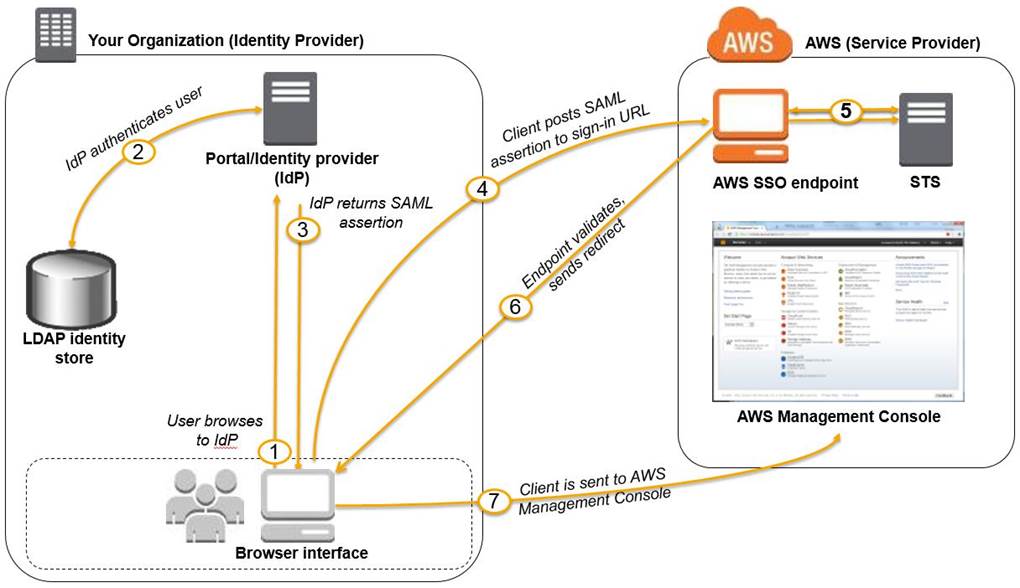In this scenario, which of the following can be used to fulfill this requirement?
A pharmaceutical company has resources hosted on both their on-premises network and in AWS cloud. They want all of their Software Architects to access resources on both environments using their on-premises credentials, which is stored in Active Directory.
In this scenario, which of the following can be used to fulfill this requirement?
A . Use Amazon VPC
B . Use IAM users
C . Set up SAML 2.0-Based Federation by using a Microsoft Active Directory Federation Service (AD
FS).
D . Set up SAML 2.0-Based Federation by using a Web Identity Federation.
Answer: C
Explanation:
Since the company is using Microsoft Active Directory which implements Security Assertion Markup Language (SAML), you can set up a SAML-Based Federation for API Access to your AWS cloud. In this way, you can easily connect to AWS using the login credentials of your on-premises network.

AWS supports identity federation with SAML 2.0, an open standard that many identity providers (IdPs) use. This feature enables federated single sign-on (SSO), so users can log into the AWS Management Console or call the AWS APIs without you having to create an IAM user for everyone in your organization. By using SAML, you can simplify the process of configuring federation with AWS, because you can use the IdP’s service instead of writing custom identity proxy code.
Before you can use SAML 2.0-based federation as described in the preceding scenario and diagram, you must configure your organization’s IdP and your AWS account to trust each other. The general process for configuring this trust is described in the following steps. Inside your organization, you must have an IdP that supports SAML 2.0, like Microsoft Active Directory Federation Service (AD FS, part of Windows Server), Shibboleth, or another compatible SAML 2.0 provider.
Hence, the correct answer is: Set up SAML 2.0-Based Federation by using a Microsoft Active Directory Federation Service (AD FS).
Setting up SAML 2.0-Based Federation by using a Web Identity Federation is incorrect because this is primarily used to let users sign in via a well-known external identity provider (IdP), such as Login with Amazon, Facebook, Google. It does not utilize Active Directory.
Using IAM users is incorrect because the situation requires you to use the existing credentials stored in their Active Directory, and not user accounts that will be generated by IAM.
Using Amazon VPC is incorrect because this only lets you provision a logically isolated section of the
AWS Cloud where you can launch AWS resources in a virtual network that you define. This has nothing
to do with user authentication or Active Directory.
References:
http://docs.aws.amazon.com/IAM/latest/UserGuide/id_roles_providers_saml.html
https://docs.aws.amazon.com/IAM/latest/UserGuide/id_roles_providers.html
Check out this AWS IAM Cheat Sheet:
https://tutorialsdojo.com/aws-identity-and-access-management-iam/
Latest SAA-C03 Dumps Valid Version with 400 Q&As
Latest And Valid Q&A | Instant Download | Once Fail, Full Refund

